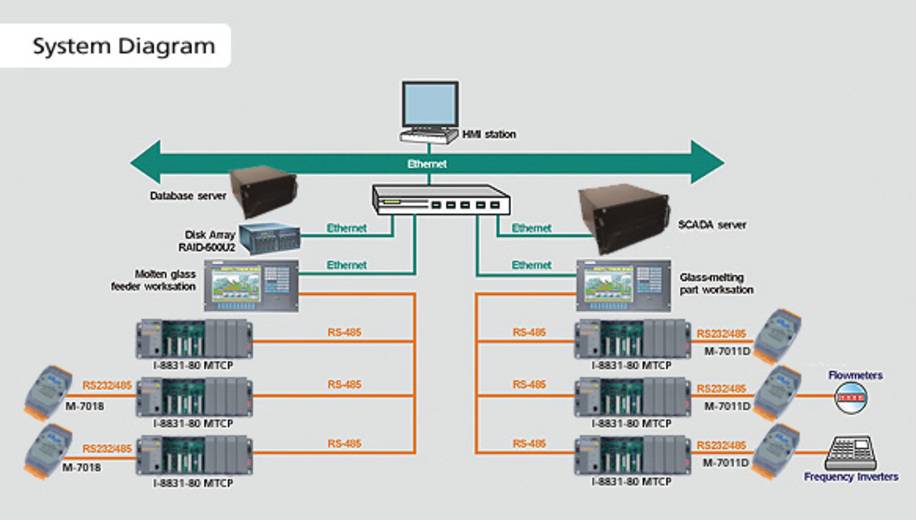Control System for Glass Furnace
In the fast-growing Russian economy, ACTIS is a leading supplier of high-quality bottles to the brewing industry. To meet increasing demand, ACTIS decided to increase capacity and set up a new production line.
The new production line was realized with the help of glass furnaces from SORG and a control system from ICP DAS. Today, ACTIS has a modern manufacturing facility with real-time data of melting processes, and the new production line has increased capacity with 290 tons per day.
The requirement
The new control system should make the new production line efficient and easy to operate. More specifically, it should operate glass melting processes and the preparation of glass before further processing in glass-forming machines. A strict control system should be provided along the whole process.
The new system should also resolve the problems with energy-saving and CAM integration that was experienced with the previous Siemens® DR25 system.
The solution

Glass Furnace
The glass furnace has four parts: regenerators, glass melter, working area and a molten glass feeder. Air is warmed up before burning is performed with the help of regenerators. The glass melter consists of a melted glass pool heated by gas-fired burners. Primary preparation of glass mass is done in the working area to reduce temperature variances inside the glass mass. The last step is to give the glass mass a homogeneous temperature in all glass layers before it goes to the molten glass feeder. The molten glass is then passed on from the furnace to the glass forming process.
Control System
There are five control loops for gas and air flow, pressure, and glass mass levels in the glass-melting part of the furnaces. Another 19 control loops regulate the temperatures in the molten glass feeder and the working area. This required a total of 82 points for temperature measurements, which was solved with M-7018 and M-7011 thermocouple input modules, as well as pyrometers. M-7017 was used for the analog signals from flowmeters and sensors to control pressure and discharge.
From the M-7000 series modules, signals were sent to I-8831-80 MTCP microcontrollers and on to AWS-8430 workstations over an RS-485 network. One AWS is used to control the glass melting, while the other controls the molten glass feeder. Convenient LCD screens on AWS-8430 provide visual feedback to the operators about the process, while the keypad is used to control the progress of the process.
The top layer uses an industrial Ethernet network to connect the workstation with two industrial PCs that have dual processors. One takes care of SCADA software, while the other contains the database stored in a secure, RAID-configured disk array. Another workstation was added to the Ethernet network to read data from the database and configure the SCADA software.
Results
The workstation was chosen because of its compact dimensions. With a depth of only 220 mm and capability of 19” rack mounting, it could fit into the constrained space at ACTIS.
The implementation of a modern glass melting control system has allowed ACTIS to increase efficiency, improve quality and reduce human errors. And the total costs have been reduced significantly due to the cost-effective ICP DAS products used in the system.